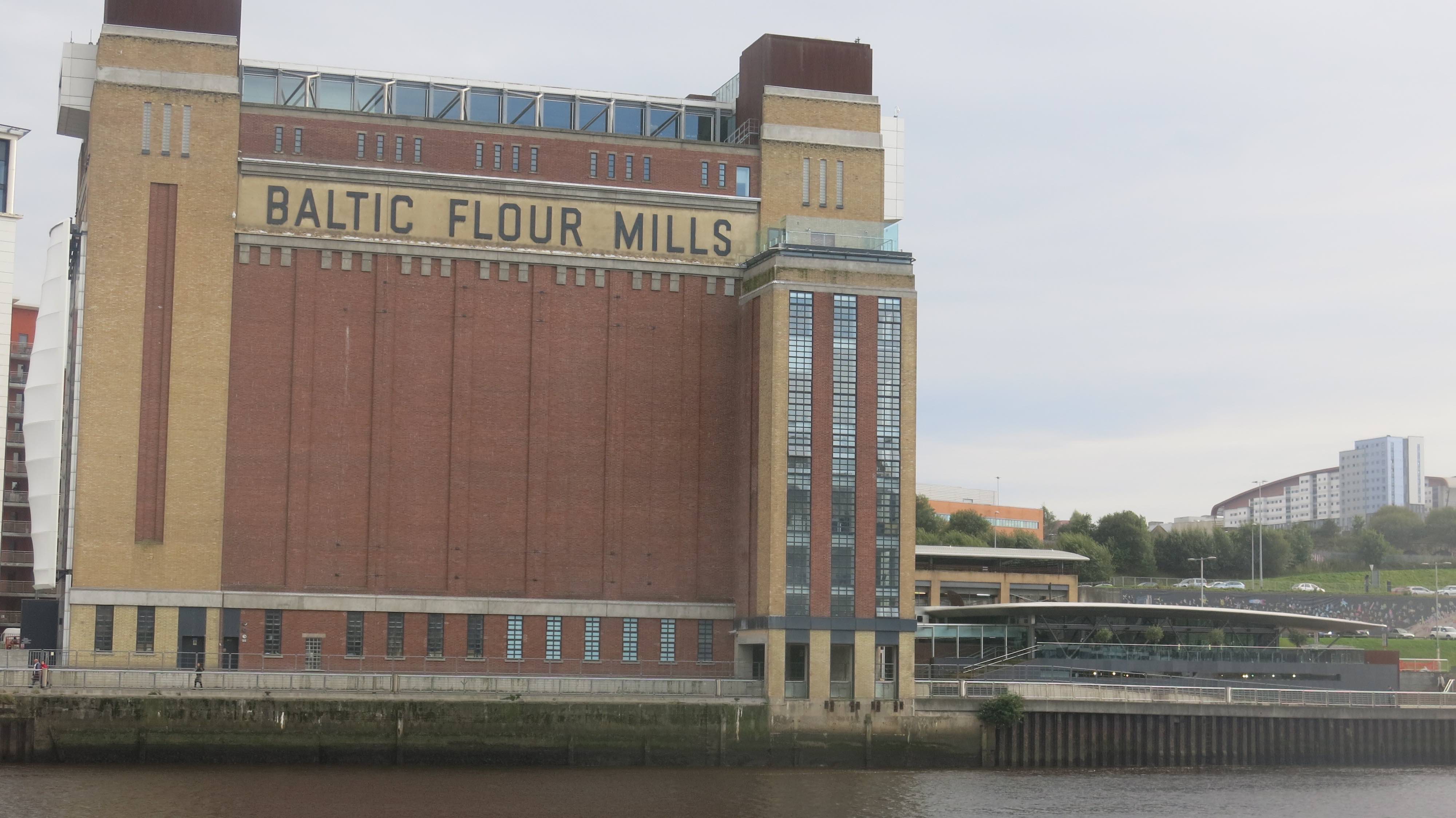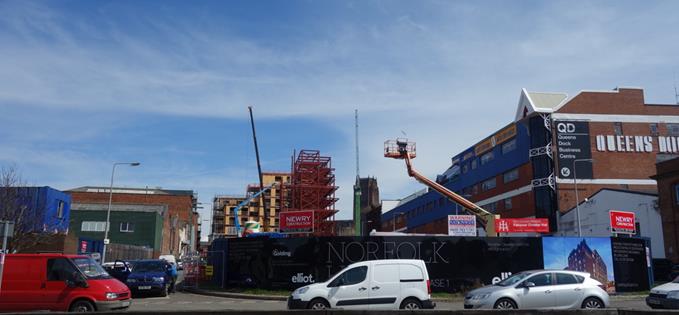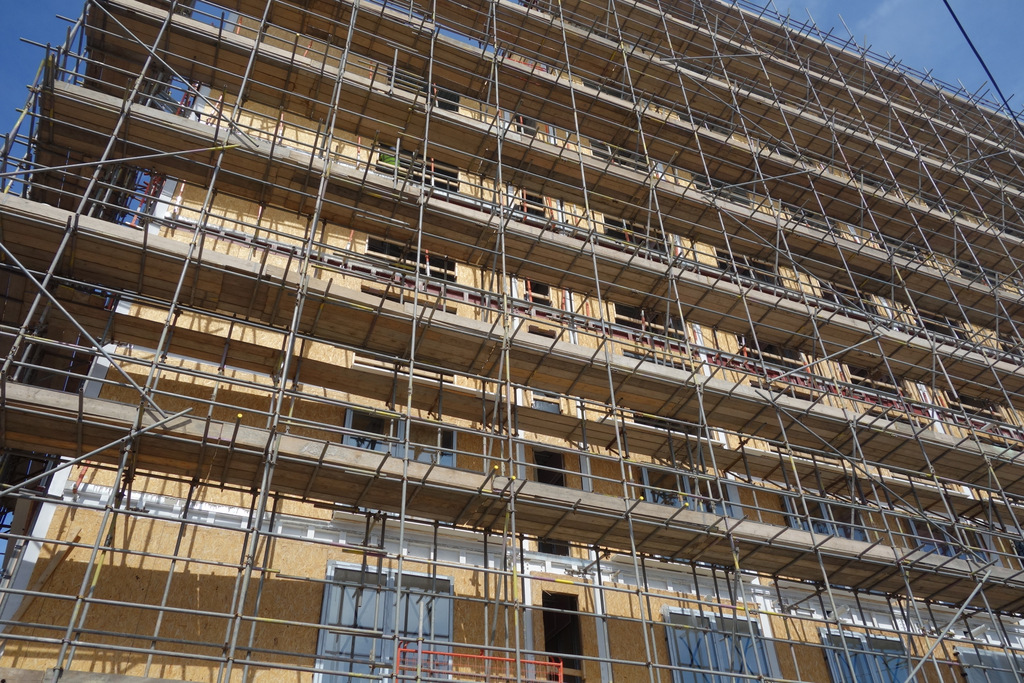A 15-STOREY block of flats on Liverpool’s waterfront could cost the city its World Heritage status, it was claimed today.
The tower, in the Baltic Triangle, will ruin views of the Anglican Cathedral from Wirral, opponents claim - with an even bigger price to pay on this side of the river.
Wayne Colquhoun, who heads the Liverpool Preservation Trust, has objected to the “crude and shoddy” 250-apartment scheme, even though developer Elliot Group has been forced to cut the height from an original 20 storeys.
Asking Historic England to look after Liverpool’s heritage is like asking my mouse to look after the cat
The Baltic Triangle Community Interest Company (CIC) is also opposing the plan, citing its impact on the Liverpool skyline.
It is also worried about an influx of residents to an area already defined by its late night bars and entertainment.
Ahead of next Tuesday’s planning committee, Colquhoun warns in his objection to the city council: “This application could be the tipping point to ensure Liverpool being thrown off the World Heritage Register by the United Nations.”
Planning officers are recommending the go-ahead be given, subject to the Secretary of State for Culture, John Whittingdale, not intervening.
Elliot Group, which is behind the Wolstenholme Square redevelopment and the controversial Heaps Rice Mill scheme, wants to construct the tower facing Queens Dock. It would front onto Chaloner Street, between Watkinson Street and Norfolk Street.
It is aiming the development at people from the suburbs who want to downsize.
Government cultural watchdog Historic England has already succeeded in getting the height of the building reduced by five storeys, agreeing that level of unjustified harm on the setting of Liverpool Cathedral as a landmark on the city skyline.
 The proposed 15-storey tower
The proposed 15-storey tower The view, from Birkenhead's Woodside terminal, is identified as a key aspect of the World Heritage Site and, when seen from this point, the tower would rise over the shoulder of the cathedral and challenge the landmark's dominance on the skyline.
It argued: “The Anglican Cathedral contributes to the distinctiveness of the city as a major component in the key views to and from the WHS. This harmful impact could be minimised, by lowering the proposed building by a number of storeys.”
But Colquhoun says even the lower height will risk the view of the cathedral, one of the key elements in the Unesco WHS accolade. The rising slope towards the cathedral is also important, he says.
The Baltic Triangle Community Interest Company wants the developers to model the impact of the scheme on the skyline and is calling for assurances that it will not impact negatively upon it and views towards the Anglican Cathedral.
It is also concerned about the growing level of residential properties in what is an established area of late bars. In other parts of the city centre, with a similar level of night life, there have been complaints about noise from incoming residents.
 The plot as it stands at the moment with the cathedral in the background
The plot as it stands at the moment with the cathedral in the background“The proposed development is in an area which has been positively characterised by well established bars and late licensed venues. These popular locations, represent both a catalyst for the area’s regeneration and positive development in the long term," it says.
“Therefore, any residential development must acknowledge these venues in the specification of the building’s envelope."
It wants the Baltic Triangle recognised as a busier, more diverse part of the city centre with specific planning conditions on acoustics and environmental health reflecting this.
Colquhoun said the scale of the proposed tower block would also have a negative impact on the setting of Heaps Rice Mill, a building which was listed as a matter urgency after it was revealed by Liverpool Confidential that Elliot Group planned to demolish it for another block of flats.
Read: Exclusive: 18th century Heaps Rice Mill faces bulldozer
He also criticised Historic English for not standing up to the city council.
“Asking Historic England to look after Liverpool’s heritage is like asking my mouse to look after the cat. There is a real need for the scale of this development to be brought down to a more human level."
 Seven storeys of another block of flats on Eliots Norfolk St development. The one being proposed for the adjacent plot of land is 15 storeys
Seven storeys of another block of flats on Eliots Norfolk St development. The one being proposed for the adjacent plot of land is 15 storeysColquhoun told planning officers in his objection: “The plans would obscure the views of the Anglican Cathedral and historic views of it from the river and Wirral side. As Liverpool is currently on the Unesco World Heritage ‘In Danger List’ and there is a moratorium on development, this application could be the tipping point to ensure Liverpool being thrown off the World Heritage Register by the United Nations.
“They advise that a judicial review will be instigated on the basis of the above if these plans are not changed."
He went on: “The City Council planners do not seem to have the ability to recognise the need to plan with the advice of the United Nations and the International Council on Monuments and Sites. Instead they help the developer bring crude and shoddy plans to fruition and, as such, are working against the city and its interests and its prowess as a World Heritage Site.”

The city planning manager says in his report that Historic England has given verbal feedback of its intention to withdraw its objection to the building following the scaling down of the tower.
A report from officers to the committee says: “The Head of Planning is satisfied that the scale and mass of the building is appropriate and while the building would become a prominent feature on the city’s skyline it would not dominate or obscure key features of this skyline, particularly the Anglican Cathedral. Historic England has also advised verbally that, in their opinion, the development would not impact negatively upon long range views of the cathedral.”
Developer Elliot Lawless said the scheme, If approved, will set the bar for height in the Baltic area.
"We've got certainty now and the process has been highly constructive. Our aim now is to deliver a scheme that brings larger, owner-occupied apartments to market, suitable for people downsizing from the suburbs.”















